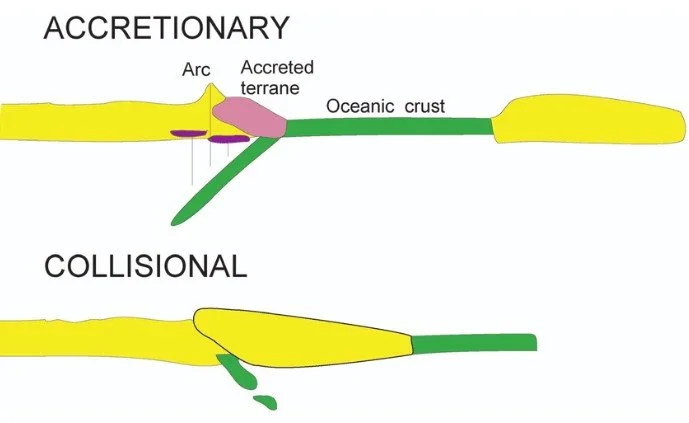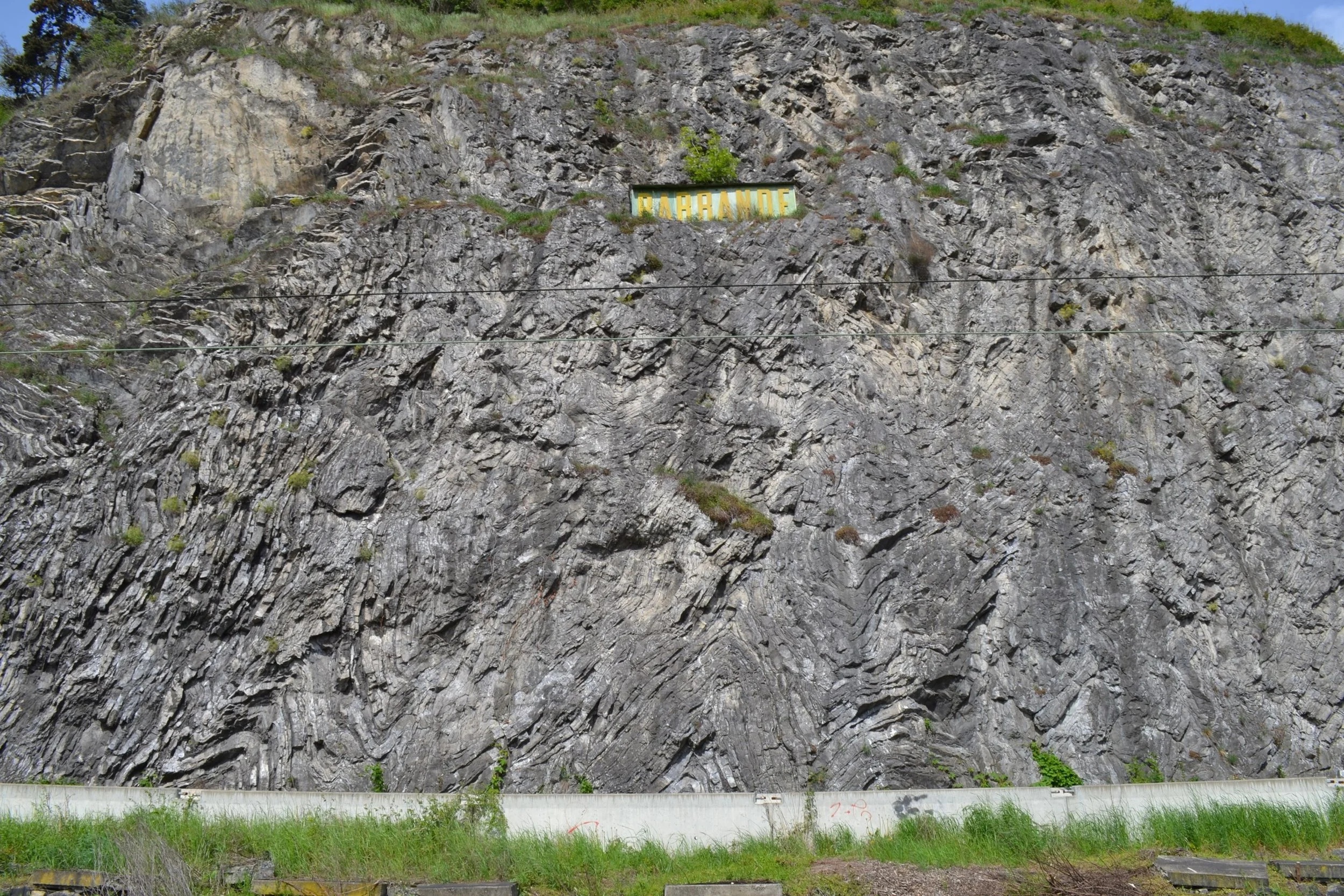Jiří Žák on the Orogenies that Shaped Central Europe
Listen here or wherever you get your podcasts.
In the podcast, Jiří Žák describes the two main orogenies whose remnants figure prominently in central European geology: the Cadomian orogeny that lasted from the late Neoproterozoic to the early Cambrian (c. 700 Ma to c. 425 Ma) and the Variscan orogeny that occurred in the late Paleozoic (c. 380 Ma to 280 Ma). The Cadomian took place on the northern margins of Gondwana, only later to rift and travel north to form what was to become Europe. The Variscan was caused by the collision of Gondwana with Laurussia in the final stages of the assembly of the supercontinent Pangea. Both orogenies have been heavily eroded, and we see their imprint in the form of metamorphic rocks, volcanic rocks, granites, and deformation structures. These are scattered across Europe, from southern Britain to eastern Europe.
Žák has been studying the geology of central Europe for over 25 years using methods ranging from structural studies in the field to detrital zircon geochronology. He is a Professor in the Institute of Geology and Paleontology at Charles University in Prague.
Podcast Illustrations
Images courtesy of Jiří Žák unless otherwise noted.
In the podcast, Jiří Žák talks about the Cadomian and the Variscan orogenies. The former was an accretionary orogen, in which material accumulates on a continental margin as oceanic plates subduct. The overriding plate incorporates island arcs, the accretionary wedge, and oceanic crust at the plate margin. Such orogens also include features such as forearcs and magmatic arcs associated with ongoing subduction. A present-day example is the western margin of South America with ongoing subduction of the Nazca plate. The Variscan was a collisional orogen, which occurs when two continental plates collide at the final stage of convergence between two plates. Buoyant continental lithosphere or other massive oceanic features such as plateaus are forced into the subduction zone. Collisional orogens result in crustal thickening, shortening, and the formation of extensive mountain ranges. The Alpine-Himalayan orogenic belt represents a prime example of a collisional orogen.
Condie, K. (2014), Mineralogical Magazine 78, 623
Map of Europe showing the main geological units as defined by their structural origin and presumed terrane provenance. Provenance is determined from the age profile of detrital zircons (see episode with Ulf Linnemann) and from trace element signatures. As the map shows, practically all of central and southern Europe (shaded grey) was derived from Gondwana. These terranes contain Cadomian and Lower Paleozoic basement rocks. The map also shows the main suture zones. A Alps, AM Armorican massif, B Balkans, BM Bohemian massif, BV Brunovistulia, CIZ Central Iberia Zone, D Dinarides, DO Dobrogea, EC Eastern Carpathians, H Hellenides, IM Iberian massif, IST Istanbul terrane, KB Kirsehir block, MC massif Central, MGCR Mid-German Crystalline Rise, MM Menderes massif, MP Malopolska block, MU Moldanubian unit, OMZ Ossa-Morena Zone, P Pyrenees, R Rhodope, S Schwarzwald, SC Scythian platform, SM Serbo-Macedonian massif, SPZ South Portuguese Zone, SX Saxothuringian unit, TBU Teplá–Barrandian unit, V Vosges.
Sen, F. (2021), International Geology Review 64, 2416
Deformed sedimentary rocks from the late Neoproterozoic to early Cambrian in the central Bohemian Massif. The sediments formed as deposits of deep-marine turbidity currents on the former trench slope of a subduction zone and were then accreted as part of an accretionary wedge at the northern margin of Gondwana.
Pillow lava compositionally corresponding to mid-ocean ridge basalts, forming large, up to km-scale blocks mixed with the turbidites (above). These lavas formed on the ocean floor of an oceanic plate that subducted beneath the northern margin of Gondwana and were subsequently scraped off the plate surface and included within the accretionary wedge.
The hammer marks the Cadomian unconformity in the Bohemian Massif where deformed and weakly metamorphosed slates of the Cadomian accretionary wedge of late Neoproterozoic to early Cambrian age (right of hammer) are overlain by moderately tilted and non-metamorphosed middle-to-late Cambrian strata deposited in an extensional basin (left of hammer). The former were formed during the Cadomian orogeny, while the latter were deposited as the Gondwana northern margin started to rift apart.
There is a debate as to how far the Cadomian terranes, specifically the major Teplá–Barrandian unit of the central Bohemian Massif, traveled away from Gondwana before they accreted to Baltica, eventually to become part of Europe. These figures illustrate contrasting models that have been proposed. (a) In this model there is a large separation between the Teplá–Barrandian unit and Gondwana, and the unit forms a completely detached microplate called Perunica (P). (b)-(d) In these models, there is little separation, and the Teplá–Barrandian unit remains part of the hyper-extended Gondwana shelf.
Žák, J et al. (2018), International Geology Review 60, 319
Upper Ordovician glaciomarine deposits with dropstones in the central Bohemian Massif. The presence of such deposits show that at this time the northern Gondwana margin was still far enough to the south of the equator to be within reach of continental glaciation. This suggests that the margin was part of the peri-Gondwana shelf, which favors the low-separation models illustrated in (b)-(d) above.
These lower Devonian limestones in Prague were deposited in warm, subtropical seas. They document the continental drift of the peri-Gondwana shelf from highly southerly latitudes toward the equator before being caught up in the Variscan orogeny when they were folded and faulted following continental collision. The memorial plaque commemorates the French paleontologist Joachim Barrande (1799-1883), who pioneered geological and paleontological research in this region.
A paleogeographic model showing the break-up of the former northern Gondwanan Cadomian active margin in the late Cambrian and early Ordovician, opening of the Rheic Ocean, transition to an early Paleozoic passive margin, and, finally, the Laurussia-Gondwana collision to form the Variscan orogenic belt. The terranes discussed in the podcast form parts of Avalonia, the Saxothuringian and Ossa-Morena Zones, the Variscan Autochthon, and the Mid-Variscan Allochthon. The Saxothuringian Zone now makes up the northwestern part of the Bohemian Massif. The Ossa-Morena Zone now forms part of the Iberian Massif in Spain and Portugal. The Variscan Autochthon comprises geological units now mainly exposed in southern Europe. The Mid-Variscan Allochthon includes the Teplá-Barrandian and Moldanubian units of the present-day Bohemian Massif.
Catalán, J.R et al. (2021), Earth-Science Reviews 220, 103700
Geological map of the present-day Bohemian Massif. The geological structure is complex, largely as a result of the Cadmonian and Variscan orogenies. The map covers a region stretching from southern Poland in the north to northern Austria in the south. It reveals a section across the Variscan orogen from the outer foreland basins (Rhenohercynian) through low-grade Cadomian basement terranes (Saxothuringian and Teplá-Barrandian) to the exhumed high-grade orogenic core (Moldanubian).
Adapted from the Geological map of the Czech Republic 1:5,000,000 published by the Czech Geological Survey, Prague, 2007











